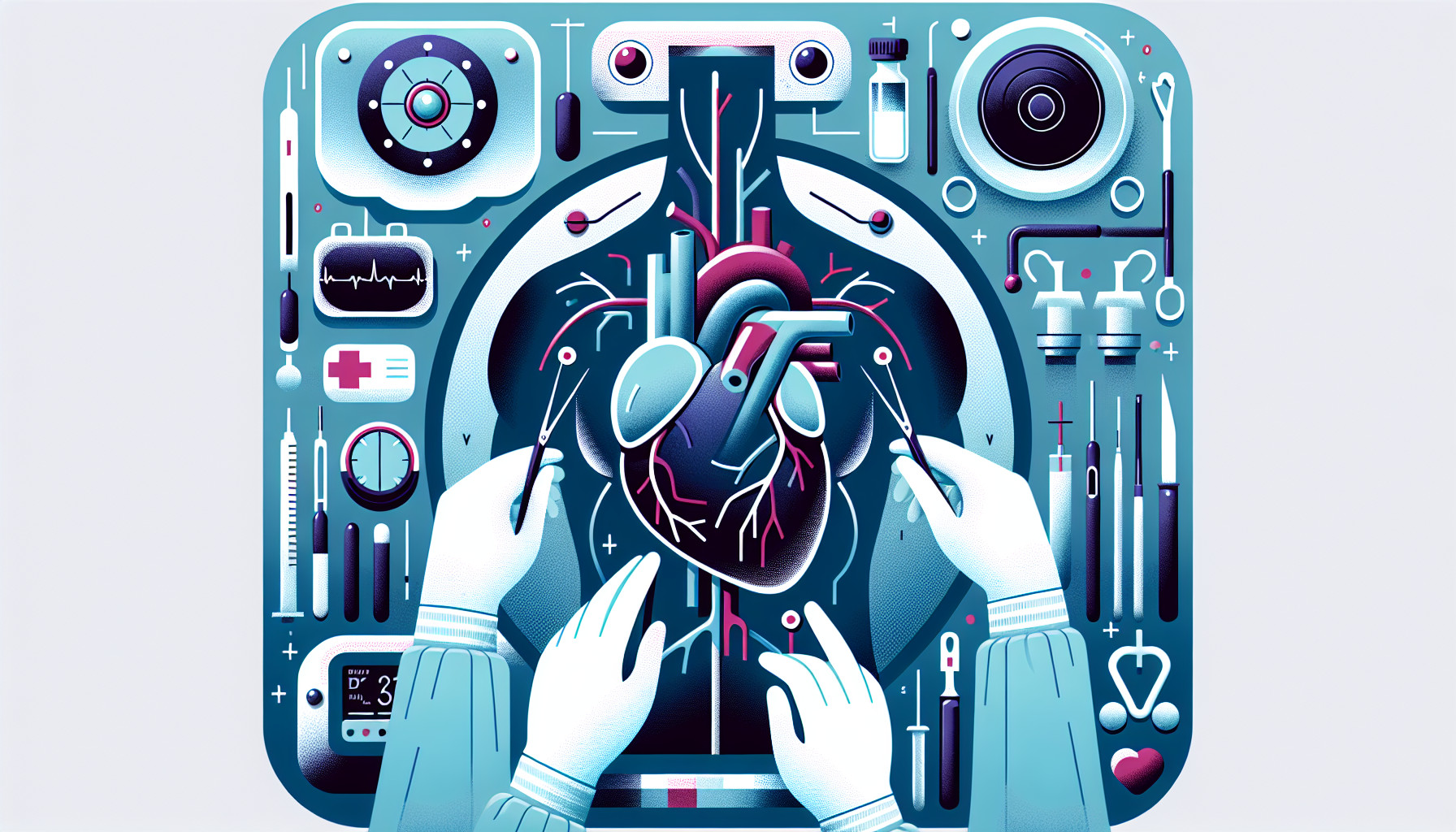Our Summary
This research paper discusses a new technique in heart surgery. Usually, a certain kind of heart surgery is done by opening up the chest, but this new method is less invasive. It is done through a small incision on the left side of the chest. However, this method requires a high level of surgical skill as it involves the use of the right internal thoracic artery, which is hard to see directly during the operation.
In this paper, the researchers describe a new way of doing this less invasive heart surgery using different arteries - the left internal thoracic artery, the right gastroepiploic artery (which is found in the stomach), and the radial artery (which is located in the arm). This new method was successful in completely restoring the blood supply to the heart without any complications. After the surgery, a CT scan showed that all the grafts were working properly.
Overall, the researchers suggest that this new method can be a safe and effective alternative for this type of heart surgery.
FAQs
- What is the minimally invasive surgery/coronary artery bypass grafting (MICS CABG) procedure?
- What is the difference between the MICS CABG procedure using the left internal thoracic artery (LITA) and the standard sternotomy approach?
- What are the possible complications of using a composite graft in MICS CABG for complete arterial revascularization?
Doctor’s Tip
A doctor may advise a patient undergoing coronary artery bypass surgery to follow a healthy lifestyle after the procedure. This may include maintaining a balanced diet, regular exercise, quitting smoking, managing stress, and taking prescribed medications as directed. It is important for the patient to attend follow-up appointments with their healthcare provider to monitor their recovery and ensure the success of the procedure.
Suitable For
Patients who are typically recommended for coronary artery bypass surgery are those with severe coronary artery disease, particularly those with blockages in multiple coronary arteries that cannot be effectively treated with medication or less invasive procedures such as angioplasty. Patients with significant symptoms such as chest pain (angina) or shortness of breath, as well as those at high risk for a heart attack or other cardiovascular complications, may also be candidates for coronary artery bypass surgery. Additionally, patients with certain risk factors such as diabetes, smoking, or a family history of heart disease may also be recommended for this procedure.
Timeline
Before coronary artery bypass surgery:
- Patient undergoes diagnostic tests such as coronary angiography to determine the extent of blockages in the coronary arteries.
- Patient may undergo medical optimization, such as medication management or lifestyle changes, to improve overall health and reduce risks associated with surgery.
- Patient meets with a cardiac surgeon to discuss the procedure, risks, and potential benefits.
- Patient may undergo preoperative testing, such as blood work and imaging studies, to assess overall health and fitness for surgery.
After coronary artery bypass surgery:
- Patient is closely monitored in the intensive care unit immediately after surgery to ensure stability and proper recovery.
- Patient is gradually weaned off mechanical ventilation and other supportive measures as their condition improves.
- Patient is transferred to a regular hospital room once stable, where they continue to receive care and monitoring.
- Patient begins physical therapy and rehabilitation to regain strength and mobility.
- Patient is discharged from the hospital once they are deemed stable and able to continue recovery at home.
- Patient undergoes follow-up appointments with their cardiac surgeon and cardiologist to monitor progress and assess long-term outcomes.
What to Ask Your Doctor
- Can you explain the benefits of minimally invasive surgery/coronary artery bypass grafting (MICS CABG) compared to the standard sternotomy approach?
- How does the use of the left internal thoracic artery (LITA) and composite graft with the right gastroepiploic artery (GEA) and radial artery (RA) differ from traditional CABG procedures?
- What are the potential risks and complications associated with MICS CABG using this composite graft approach?
- How long is the recovery period expected to be after MICS CABG with this specific graft technique?
- Are there any specific lifestyle changes or medications that I will need to follow after undergoing this procedure?
- Will I need any additional follow-up appointments or tests to monitor the effectiveness of the grafts after surgery?
- Are there any restrictions on physical activity or strenuous exercise that I should be aware of following MICS CABG with this composite graft?
- How successful have outcomes been for patients who have undergone MICS CABG with this composite graft approach in the past?
- Are there any alternative treatment options or procedures that I should consider before moving forward with MICS CABG?
- How experienced are you and your surgical team in performing MICS CABG with this specific graft technique?
Reference
Authors: Sumi K, Yoshida S, Okamura Y, Isomura T. Journal: Ann Thorac Cardiovasc Surg. 2021 Oct 20;27(5):286-289. doi: 10.5761/atcs.nm.20-00241. Epub 2021 Jan 8. PMID: 33431759
